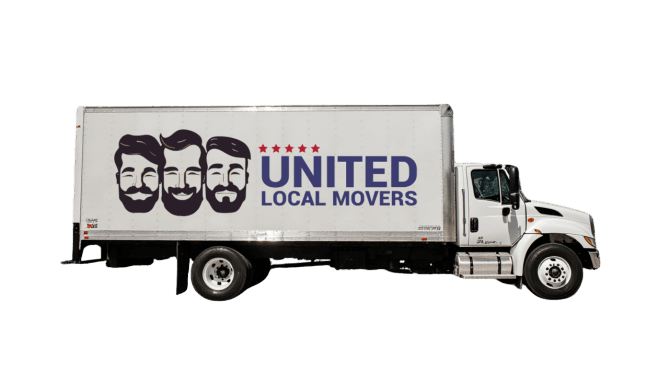Timing can make or break your moving experience. From cost to crew availability to weather conditions, the month and day you choose to move can have a major impact on your budget and stress level. Understanding seasonality in the moving industry helps you plan smarter, save money, and enjoy a smoother transition into your new home.
Why Seasonality Matters in the Moving Industry
Unlike many other services, moving is highly seasonal. Demand for movers doesn’t stay constant throughout the year — it peaks in certain months and dips in others. This fluctuation affects everything: prices, truck availability, traffic, and how quickly you can get a confirmed moving date.
Knowing when demand is high or low lets you book strategically, get better rates, and avoid scheduling headaches. Let’s look at how each season impacts your move.
Peak Season (May to September): High Demand, High Cost
The months between May and September make up what movers call the “peak season.” Roughly 70% of all U.S. household moves occur during this time. Families prefer summer moves to align with school breaks, and weather conditions are generally favorable across most states. But these advantages come at a price.
- Pros: Ideal weather, longer daylight, school vacation alignment.
- Cons: Higher prices (often 20–30% more), limited availability, increased traffic, and tight delivery windows.
If you plan to move during peak season, booking early is essential. Reserve your preferred date at least 6–8 weeks in advance. Reliable companies like United Local Movers fill their calendars quickly during summer, especially weekends.
Off-Season (October to April): Lower Costs and Flexible Scheduling
The off-season — late fall through early spring — is the best time to move if you’re looking for lower prices and greater flexibility. Demand slows, meaning you can often secure your ideal moving date and get more personalized attention from your mover.
- Pros: Lower rates, flexible scheduling, more attentive crews.
- Cons: Shorter days, possible bad weather (especially in northern states), and tighter delivery windows due to fewer long-haul routes.
Moves in November through February can be up to 30% cheaper compared to July or August. While you’ll need to plan around colder weather, this trade-off often pays off financially.
Best Months to Move for Affordability
If you want to balance decent weather with budget-friendly pricing, the sweet spots are:
- March and April: Before peak season starts — mild weather and moderate rates.
- October and early November: After demand drops — cheaper and less crowded.
During these months, moving companies often run promotions or discounts to attract business. You’ll also face less competition for moving trucks, elevators, and storage units.
Best Days of the Week to Move
Believe it or not, the day of the week you move can influence cost and convenience just as much as the season. Movers tend to be busier on weekends and at the beginning or end of each month, so mid-week and mid-month moves usually cost less.
| Day | Typical Demand | Average Price Difference |
|---|---|---|
| Monday | Moderate | -5% to -10% |
| Tuesday–Thursday | Low | -10% to -20% |
| Friday | High | +10% |
| Saturday–Sunday | Very high | +15% to +25% |
Pro tip: If you can take a weekday off work, schedule your move on a Tuesday or Wednesday. You’ll get better pricing, less traffic, and faster service.
Best Time of Month to Move
Most leases start or end at the beginning or end of the month, meaning movers are busiest during the first and last few days. The middle two weeks of each month tend to have the lowest demand and most flexible scheduling options.
For long-distance moves, this also helps avoid backlogs at dispatch centers. Fewer pickups and deliveries happening simultaneously means a smoother, more predictable timeline.
Weather Considerations by Season
Weather can dramatically impact your moving experience. While summer brings long days and dry roads, winter poses its own challenges. Here’s what to expect in each season:
- Spring: Comfortable temperatures and lower rates, though early rain can complicate loading.
- Summer: Clear weather but high demand; movers may be booked solid.
- Fall: Stable conditions and balanced rates — one of the best times to move.
- Winter: Risk of snow and ice but deep off-season discounts.
Plan ahead for seasonal challenges: check forecasts, keep pathways clear, and pack items with weather protection in mind.
How Seasonality Affects Delivery Windows
During peak months, delivery windows tend to be longer because trucks are busier and routes are more complex. In contrast, off-season moves often benefit from shorter delivery windows since carriers have fewer shipments to coordinate. If timing matters, ask your mover how seasonality affects delivery estimates for your specific route.
Budgeting Around Seasonality
Planning your move in an off-peak period can save hundreds — even thousands — of dollars. Here are ways to make the most of it:
- Request quotes from multiple companies across different months.
- Ask about off-season promotions or weekday discounts.
- Book early in peak season to lock in lower rates.
- Be flexible with pickup and delivery dates to maximize savings.
Companies like United Local Movers help clients plan moves strategically by suggesting optimal dates and offering transparent, seasonal pricing options.
Why Timing Impacts Quality of Service
It’s not just about money — timing affects quality too. During busy summer months, crews may work longer hours or juggle multiple jobs, increasing the risk of fatigue and errors. Off-season moves often benefit from more relaxed schedules and personalized service. Movers can dedicate more time and care to each client.
Turning Seasonal Planning Into Smart Strategy
Knowing when to move is as important as knowing how to move. By aligning your relocation with off-peak months and mid-week days, you can reduce costs, enjoy better weather, and secure reliable service without the rush.
With United Local Movers, your relocation becomes safer, faster, and stress-free. Our team helps you plan around seasonal trends so you can move at the perfect time — comfortably and affordably.





